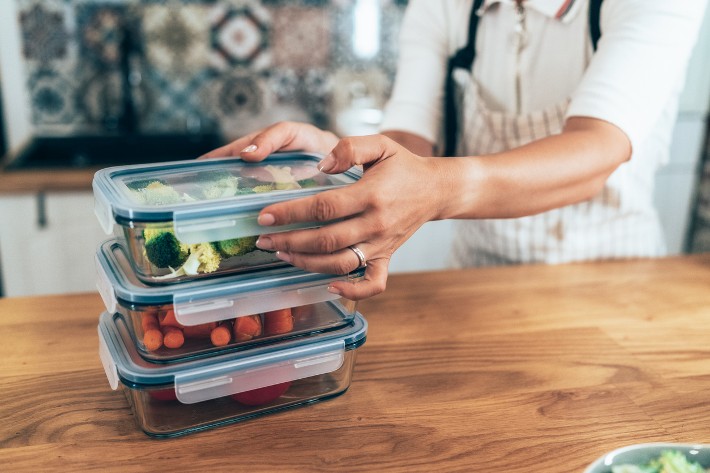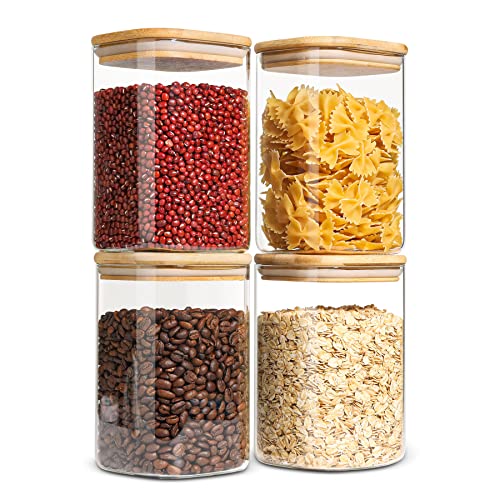Our content is meticulously curated through independent research, testing, reviews, and AI-driven recommendations, all designed to present you with the finest product choices. When you make a purchase through our links, it could result in us earning a commission.

Food storage containers help you keep your food fresh and organized. Some containers can be used to store any type of food, while some are only designed to store dry food or non-perishable items. They are typically made out of plastic, glass, silicone, or stainless steel. Each material has pros and cons; it all depends on what types of food you plan to store in them and for how long. For example, silicone containers are lightweight, easy to handle, kid-friendly, and dishwasher-safe, but glass containers are durable, microwave-safe, and do not absorb food odors or stains. Our team has put together a list of the best food storage containers and the top spot goes to the ComSaf Glass Food Storage Containers because of their volume capacity, size variety, modern aesthetic, and airtight storage.
.
Air and moisture are the enemies of fresh foods. Whether storing perishables like salad or non-perishables like dried pasta and biscuits, exposure to air and moisture will cause food to spoil faster. Although containers without proper-fitting lids can be covered in cling film or aluminum foil, this does not efficiently seal in freshness.
Ultimately, safe food storage comes down to the correct conditions and container reheating or freezing compatibility. Here’s what you must consider when choosing the safest, most space-saving food storage containers.
Most reusable containers are made from either glass or plastic. Disposable aluminum foil or cardboard containers are usually for short-term use only and are unsuitable for keeping food fresh for a long time.
Glass containers allow you to store and reheat food safely without worrying about chemicals going into the food or the hassle of transferring the meal into a heatproof dish. They don’t stain or retain food odors easily and are less likely to leak than other containers. They’re heavier than plastic and break more easily while being more expensive. My family opts mainly for glass containers because they are so heavy to stain. Is there anything worse than having to scrub out tomato sauce stain from a contain? I don't think so. Still, plastic containers have their place. Speaking of which...
Good quality plastic containers are ideal for taking food to school or work since they don’t break easily and are much lighter. Unlike glass containers, which generally aren’t suitably sized for bulk items, plastic is available in pretty much any size. But remember that it is important only to use BPA-free, food-safe plastic containers for edible items. Plastic containers are also not suitable for warming meals in the oven and may retain stains and odors from foods with intense flavors, such as curry.
Round, square, and rectangular — containers come in a range of shapes, but what you pick depends on preference. Square and rectangular containers are easy to squeeze into corners and help optimize your available storage space. Round glass containers on countertops for tea, coffee, sugar or cereals do, however, add a softer touch to your display.
Having a set of different sizes is always ideal. This way, you’ll have containers small enough for small leftover items and large family meals, casseroles, or cereals, which usually come in bulk quantities. When not in use, you can store them inside each other, which saves space and keeps everything organized.
Clear containers are incredibly handy since you can see what’s inside and how much is left. This makes grabbing what you need from the cupboard easy without opening multiple containers. Alternatively, colored plastic containers can be helpful in color coding your storage or giving each child a specific color for their school lunch.
Some units feature smaller compartments within the container. This allows you to keep smaller food items separate but still in the same container instead of using a different container for each. For example, you can separate different color frostings for cupcake decorating or prevent your salad from leaking onto your sandwich.
Although air-tight containers are a little pricier, they will ensure your food stays fresher for longer. Clip-on lids with a rubber seal keep air and moisture out, protecting food from going stale and preventing discoloration or textural changes. They also prevent odors from getting out and being absorbed by other foods in the fridge or freezer. Whichever food storage containers you choose, make sure the lids fit well, aren’t cracked, and don’t pop off on their own. I was surprised how much longer some of my foods lasted in the fridge and freezer due to airtight lids. I noticed that my frozen foods were barely, if at all, freezer-burned after swapping to airtight lids.
If you’re choosing plastic containers, make sure they’re made from BPA-free, food-safe materials. Plastic containers that are not food-safe will transfer harmful chemicals into food during storage and heating. A quick way to determine this is to look at the recycling code on the container. The best options are items marked 1, 2, 4, and 5. Avoid anything marked with a 7, as this contains BPA.
Although some containers are freezer, oven, microwave, and dishwasher safe, not all of them are this versatile. If you use containers not designed for the freezer or heating, they will crack or melt when exposed to extreme temperatures. Even placing hot food in a container not made for heat exposure can cause damage. Make sure that the containers you choose are compatible before placing them in the dishwasher or exposing them to extreme temperatures.

| Pros | Cons |
|---|---|
|
|

| Pros | Cons |
|---|---|
|
|

| Pros | Cons |
|---|---|
|
|

| Pros | Cons |
|---|---|
|
|

| Pros | Cons |
|---|---|
|
|

| Pros | Cons |
|---|---|
|
|

| Pros | Cons |
|---|---|
|
|

| Pros | Cons |
|---|---|
|
|

| Pros | Cons |
|---|---|
|
|

| Pros | Cons |
|---|---|
|
|

| Pros | Cons |
|---|---|
|
|

| Pros | Cons |
|---|---|
|
|